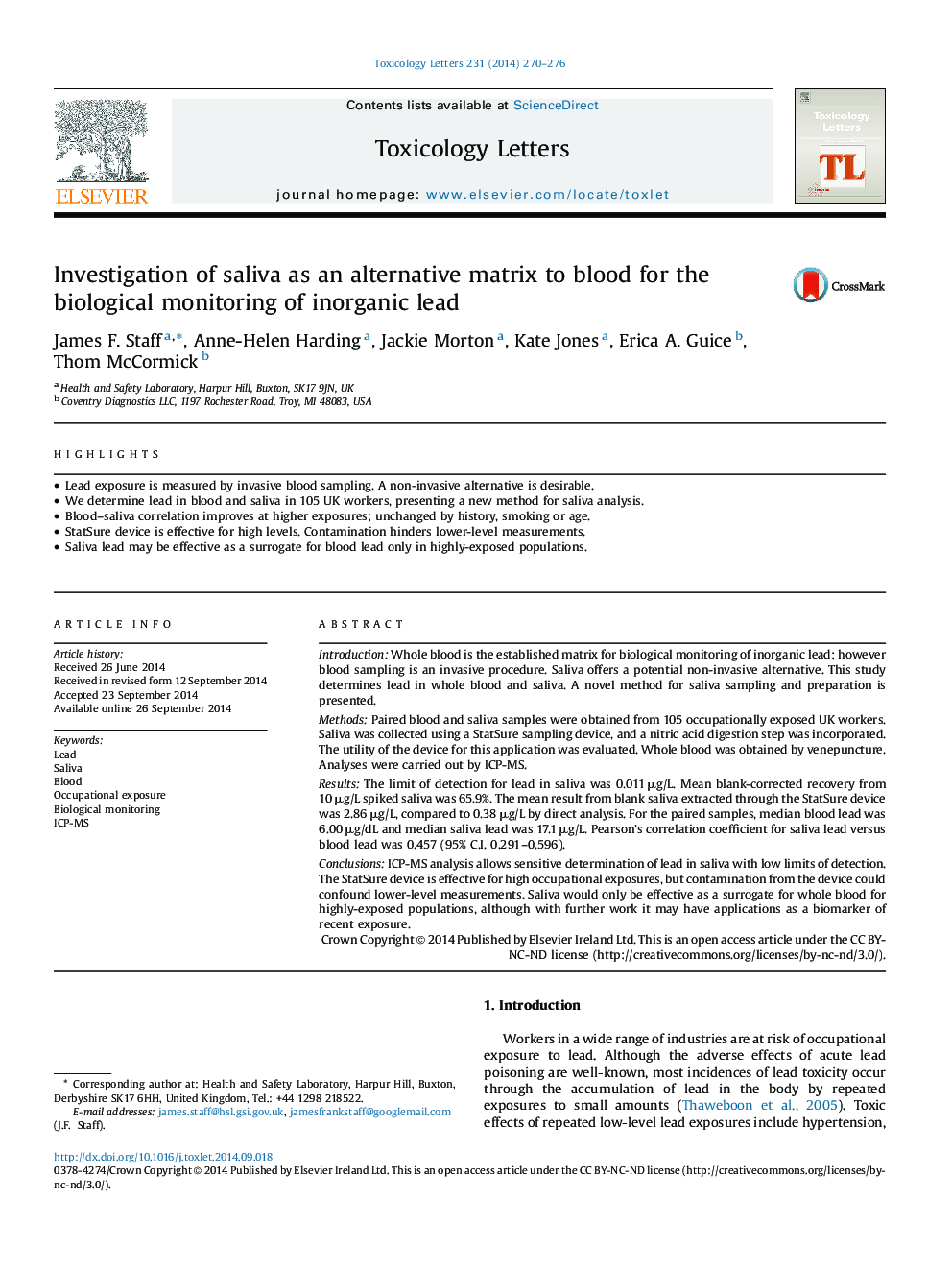| Article ID | Journal | Published Year | Pages | File Type |
|---|---|---|---|---|
| 5860116 | Toxicology Letters | 2014 | 7 Pages |
â¢Lead exposure is measured by invasive blood sampling. A non-invasive alternative is desirable.â¢We determine lead in blood and saliva in 105 UK workers, presenting a new method for saliva analysis.â¢Blood-saliva correlation improves at higher exposures; unchanged by history, smoking or age.â¢StatSure device is effective for high levels. Contamination hinders lower-level measurements.â¢Saliva lead may be effective as a surrogate for blood lead only in highly-exposed populations.
IntroductionWhole blood is the established matrix for biological monitoring of inorganic lead; however blood sampling is an invasive procedure. Saliva offers a potential non-invasive alternative. This study determines lead in whole blood and saliva. A novel method for saliva sampling and preparation is presented.MethodsPaired blood and saliva samples were obtained from 105 occupationally exposed UK workers. Saliva was collected using a StatSure sampling device, and a nitric acid digestion step was incorporated. The utility of the device for this application was evaluated. Whole blood was obtained by venepuncture. Analyses were carried out by ICP-MS.ResultsThe limit of detection for lead in saliva was 0.011 μg/L. Mean blank-corrected recovery from 10 μg/L spiked saliva was 65.9%. The mean result from blank saliva extracted through the StatSure device was 2.86 μg/L, compared to 0.38 μg/L by direct analysis. For the paired samples, median blood lead was 6.00 μg/dL and median saliva lead was 17.1 μg/L. Pearson's correlation coefficient for saliva lead versus blood lead was 0.457 (95% C.I. 0.291-0.596).ConclusionsICP-MS analysis allows sensitive determination of lead in saliva with low limits of detection. The StatSure device is effective for high occupational exposures, but contamination from the device could confound lower-level measurements. Saliva would only be effective as a surrogate for whole blood for highly-exposed populations, although with further work it may have applications as a biomarker of recent exposure.
